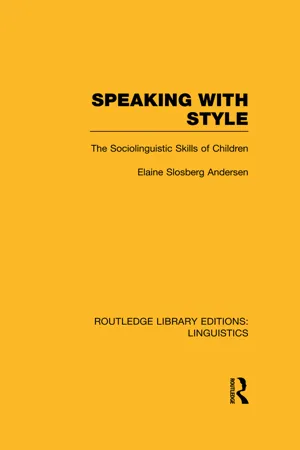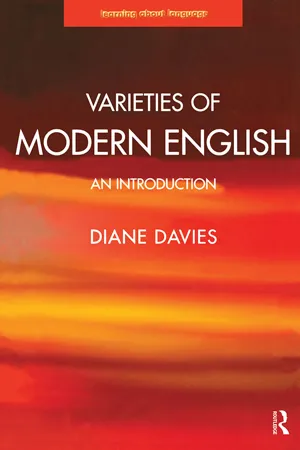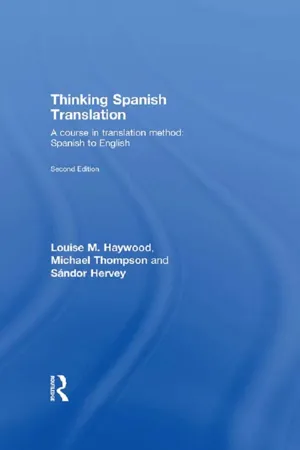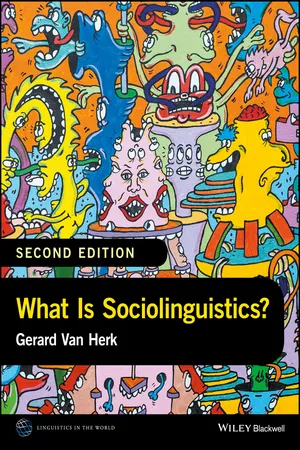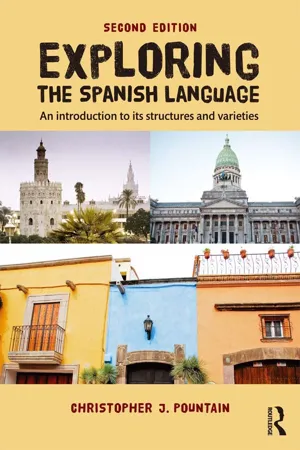Languages & Linguistics
Register and Style
Register refers to the variety of a language used in a particular social setting or for a specific purpose. It involves the use of specific vocabulary, grammar, and pronunciation. Style, on the other hand, refers to the way language is used to convey a particular attitude or tone, often influenced by factors such as formality, informality, or emphasis.
Written by Perlego with AI-assistance
Related key terms
10 Key excerpts on "Register and Style"
- eBook - ePub
- Gerard Van Herk(Author)
- 2012(Publication Date)
- Wiley-Blackwell(Publisher)
response . All utterances (from a greeting to a textbook) are addressed to somebody, and language results from a “reciprocal relationship between speaker and listener, addresser and addressee” (Voloshinov 1973/1929). People respond to others and expect a response in return: “I try to act in accordance with the response I anticipate” (Bakhtin 1986: 95).Genre, Register, Jargon- Languages involve heteroglossia , sometimes translated as “double voicing.” Any language at any point is massively internally diverse, full of jargons and dialects, which act to flavor all components of the language: “there are no ‘neutral’ words and forms – words and forms that can belong to ‘no one’; language has been completely taken over, shot through with intentions and accents … All words have the ‘taste’ of a profession, a genre, a tendency, a party, a particular work, a particular person, a generation, an age group, the day and hour. Each word tastes of the context and contexts in which is has lived its socially charged life; all words and forms are populated by intentions” (Bakhtin 1981: 293).
This last paragraph in particular seems to nail the issue of style and speaker identity performance. Every bit of language has social meaning derived from how it has been used and interpreted in the past, so whenever speakers make linguistic choices, they’re drawing on all those social meanings to create their own mashup, which they expect to trigger a social interpretation in their listeners.Style is a shifty thing – we’re always fine-tuning our output to our interlocutors and our purposes. But we also vary our language in ways that are not so split-second. The term register , like style, describes a type of speech, but it is more closely associated with a specific speech situation, often related to an occupation or particular pastime, so we can speak of a legal register or ritual language register or sports announcer register . People often speak of recipe register , although we can also think of recipe as a genre - eBook - ePub
- Laurel Brinton, Alexander Bergs, Laurel Brinton, Alexander Bergs(Authors)
- 2017(Publication Date)
- De Gruyter Mouton(Publisher)
beyond register conventions, ideas of norm vs. deviance, and (potentially prescriptive) aesthetic notions. A given style can go with an individual, a group of people, or a time period.A note on the application of some of these concepts in a commonly used source in historical linguistics, namely The Helsinki Corpus (HC) (Rissanen et al. 1991), may be in order here. The corpus encodes what it calls “text type” (<T>) and “prototypical text category” (<Z>). The latter refers to (broad) text types as explained above, containing such labels as “expository”, “instruction religious”, and “narration imaginative”, to which it adds register information (religious) or the more general Volume 3 distinction of (non-)fictionality in some cases. The Helsinki Corpus text types, in contrast, in some cases are rather genres (e.g. handbook, sermon, preface, comedy) and in others are reminiscent of registers (e.g. science medicine, history).2A selective history of registers
Some registers are attested throughout the history of English, albeit perhaps in varying strength and internal variety. The religious register is one of those with a long history, for example, and also with a certain breadth of representation. Apart from the Bible, the register is represented by – both original and translated – sermons and homilies, texts related to the liturgy like prayers, the Creed, the psalter or hymns, lives of saints, hortative and instructional writing, and academic theological/exegetical writing. Except for the last type, all are attested from Old English onwards. Other registers, in contrast, have only emerged at some later point in history (e.g. newspaper language). Late evolution may have to do with extralinguistic developments, such as the possibilities offered by the printing press or the rise of modern natural science, but also with the different status of English vis-à-vis other languages in different periods. As to the latter aspect, in domains like religion, the law, and scientific/academic writing, Latin, in particular, and French played important roles during the Middle Ages and also beyond, thus competing with, sometimes dominating, English in the respective registers (cf. Görlach 1999b: 462). This will also be visible in the short outline of the registers of law and science which follows. - eBook - ePub
Speaking With Style (RLE Linguistics C: Applied Linguistics)
The Sociolinguistics Skills of Children
- Elaine Andersen(Author)
- 2014(Publication Date)
- Routledge(Publisher)
Chapter two The study of register variationEvery human being is a bundle of institutionalized roles. He has to play many parts, and unless he knows his lines as well as his role he is no use in the play. (Firth, quoted in Verma 1969: 293)The notion of ‘register’Doctors from Atlanta speak differently from doctors from Brooklyn; they come from different regions of the United States. Salespeople at Saks in New York speak differently from salespeople at Gimbels in that same city; they come from different socio-economic classes (Labov 1966). The speech of grandparents varies in a number of systematic ways from the speech of their grandchildren; they are from different generations. The area of linguistics which traditionally has been concerned with such differences is called dialectology: regional and ‘temporal’ dialects have long been a topic of study for linguists (Bloomfield 1933); social dialects have also been of long-standing interest (Labov 1972(a); Bernstein 1960; Sweet 1928).There is, however, another dimension along which one can arrange language varieties. While dialects vary in relation to characteristics of users (i.e. where they are from, their social class), there are other varieties within any language which are distinguished by the circumstances of their use. The use of the term ‘register’ to describe this form of variation was introduced by Reid (1956) who first analysed the phenomenon in the context of bilingualism. (Other terms – most notably ‘speech style’, ‘variety’, and ‘code’ – have also been used, but ‘register’ seems preferable to them, largely because, unlike the others, it has not already been applied with other meanings to such fields as literature, dialectology, etc.1 ) Reid pointed out that in many bilingual or multilingual communities, given languages serve discrete functions. Language x, for example, may be used in the classroom, in the newspaper, in government, etc., while language y - eBook - ePub
Varieties of Modern English
An Introduction
- Diane Davies(Author)
- 2014(Publication Date)
- Routledge(Publisher)
A register is a variety of language most likely to be used in a specific situation and with particular roles and statuses involved. Examples might be a toast at a wedding, sports broadcast, or talking to a baby. A register is marked by choices of vocabulary and of other aspects of style.The term ‘register’ is connected to language variation according to use, rather than to variation according to the user, for which we have the term ‘dialect’. However, while we might choose, as in this chapter, to focus more on one type of variation than the other at any particular time, the two are not mutually exclusive. Indeed, as Leech, Deuchar and Hoogenraad (1982:10) note, ‘dialect and register variation interact with each other since both the dimensions of user and use are always present’.A theory of register associated principally with Halliday (e.g. 1973) identified three dimensions of a communicative event: the field, tenor and mode of discourse. The field is the social activity, purpose and sometimes subject-matter in the communicative situation. In a live tennis match commentary the field is identifiable on the linguistic and stylistic level by its vocabulary (in this context we expect to find lexical items like lob, deuce and match point) and specific grammatical features such as a large number of clauses with action predicates. This is especially true of radio sports commentary, where the ongoing state of play is supplemented by more detailed comments on the precise actions and styles of the players, as in Capriati serves another brilliant ace. Action predicates are typically linked with the surrounding nouns, with the agent role normally taken by the initial noun phrase in the clause, as in the Capriati example above.Tenor refers to the social roles of the participants and their interrelationships. The linguistic and stylistic features associated with tenor are mainly mood, deixis and modality. Mood, in Hallidayan, or systemic, grammar refers to distinctions of illocutionary force or communicative function in sentence types, shown partly by whether sentences use an indicative (stating), imperative (commanding/requesting) or interrogative (questioning) mood. Deixis, from the Greek for ‘pointing’ or ‘showing’, refers to the orientational features of language connected with space, time and viewpoint. Deictic words have variable or shifting meanings depending on the identity of the speaker. The precise meanings of this, that, these, those, here, there, yesterday, now, I, you, the former, the latter, etc. can only be worked out through awareness of their context of utterance. Finally, modality is that aspect of linguistic structure which deals with the speaker’s degree of knowledge or certainty about propositions, communicated through modal verbs such as must, may, can, will and also through adverbs like presumably, possibly - eBook - ePub
Thinking Spanish Translation
A Course in Translation Method: Spanish to English
- Louise Haywood, Michael Thompson, Sándor Hervey(Authors)
- 2013(Publication Date)
- Routledge(Publisher)
10 Language variety
Social and tonal registerIn this chapter and Chapter 11 , we discuss the principal implications for translation of language variety. There are four main ways in which oral and written language manifests variety (affecting textual variables on all levels -phonic, graphic, morphological, syntactical and lexical):1 Social register — users choose forms of language appropriate for particular social situations or topics, with varying degrees of formality, different stylistic conventions and employing particular subsets of their vocabulary.2 Tonal register — users choose forms of language designed to convey their attitude towards what is being expressed or towards their addressees (or to generate an emotional response from addressees).3 Dialect — speakers use forms of language that are particular to specific geographical areas and act as markers of identity and origin (and which are perceived as related but distinct by speakers of other dialects of the same language).4 Sociolect — speakers use forms of language that are particular to specific social groups (socio-economic classes, occupations, age-groups, subcultures) and which are often perceived as markers of social status.All four categories operate simultaneously in any given piece of language and interact with one another. Different dialects and sociolects have different ways of marking social and tonal register; a particular effect of social or tonal register may be achieved by choosing a feature specific to a dialect or sociolect; a sociolect may cut across several dialects and vice versa. Categories 1 and 2 are primarily a matter of choices made by language users, though some are more conscious than others of the range of choices open to them. Category 1 is often referred to as simply ‘register’, but we prefer to distinguish between social and tonal registers. While categories 3 and 4 are more to do with instinctive language habits than conscious choices, most people are capable of adapting their language behaviour according to whether they are addressing fellow members of a language community or outsiders. Dialects and sociolects do not in principle have clear or fixed boundaries, often taking the form of a continuum of varieties shading into one another, although decisive dividing lines are imposed in some cases by politics or geography. Categories 1 and 4 may in practice be marked by many of the same linguistic features, but whereas social register is a temporary adaptation for particular communicative purposes, sociolect is an established habit. - eBook - ePub
- Gerard Van Herk(Author)
- 2017(Publication Date)
- Wiley-Blackwell(Publisher)
8 StyleIn this chapter:
- Defining and measuring style
- Identity performance
- Other variation within the speaker: genre, register, jargon
Over the last few chapters, we’ve moved closer and closer to thinking of people as active participants in the sociolinguistic process. In any social interaction, the language used is determined by more than just the social characteristics of the participants. Our communicative competence (our awareness of how language interaction works in our community) lets us express the same idea in many ways. In terms of content, “Would you please pass the remote?” means roughly the same thing as “Gimme the remote!” But the two utterances are interpreted very differently by socially capable people. People evaluate an interaction and decide which way of speaking is best suited to it, and change their language (and expectations) accordingly. Sociolinguists use the term style to describe this kind of intra‐speaker (“within the speaker”) variation.Now, this means that sociolinguists have a narrower definition of style than normal people do. Normal people might say that you and I talk differently because we have “different styles.” As a sociolinguist, though, I reserve the term for differences between the way you talk in one interaction and the way you talk in another. During a relaxed conversation with friends, you may not consciously say to yourself, “Oh, this might be a good time for me to use contracted forms and fewer educated words,” but your language shows that you’ve made that decision anyway. This means that you must be carrying around information about how other people evaluate contractions and educated words, as well as how they assign social meaning to any particular type of interaction.Style overlaps with many of the ideas covered in the past chapters, as our style choices include deciding which social characteristics to reveal or perform. In particular, we saw style shifting in how people “do” gender, and some of the ideas from that chapter, including performance, will re‐surface here. Style also overlaps with ideas from chapters yet to come, especially with the rules or expectations for interaction (Chapter 9 - eBook - ePub
Exploring the Spanish Language
An Introduction to its Structures and Varieties
- Christopher Pountain(Author)
- 2016(Publication Date)
- Routledge(Publisher)
7Register
In Chapter 6 we looked at diatopic and diastratic variation in modern Spanish. In this chapter and the next we will consider what is sometimes called diaphasic variation. First of all we look at register, i.e. variation according to the situation in which language is used, or the purpose for which it is used. As with diatopic and diastratic variation, it turns out that such external circumstances can often be correlated with internal, structural features of language. Native speakers can make judgements about what is appropriate and inappropriate linguistically in a particular situation, an ability which is sometimes called communicative competence (Hymes 1974: 75), just as surely as they can recognise the acceptability or unacceptability of grammatical forms. Unlike diatopic and diastratic linguistic variation, however, register has primarily been studied as a property of written texts, and while the geographical and social variation observable in speech is largely subconscious on the part of the speaker, written register is often a more consciously cultivated phenomenon. Furthermore, the characterisation and classification of situation and purpose cannot by its very nature be as rigorous as identification of such variables as sex, age, or even social class, and it is rarely possible to say that a particular text uniquely exemplifies one particular register. Certain situations of use in fact demand and exploit register-switching (e.g. quoted conversational forms in a newspaper report, allusory language, parody).We must distinguish between categorisation of the situation or purpose of a text and the identification of its characteristic linguistic features. Register is often characterised (following Halliday 1978: 31–5) according to the parameters of field, tenor and mode. Field relates to the subject-matter of the discourse, tenor to the relation between the participants (e.g. speaker and hearer, writer and reader) and mode to the medium employed (e.g. speech or writing). In a political speech, the field might be the national economy, the tenor would be a single speaker trying to persuade a mass audience of a particular point of view, and the mode would be spoken, but usually on the basis of a written script. From the linguistic point of view it is common to use general terms such as high or low register, high register being generally correlatable with an abstract or intellectual field, a formal or conventional tenor, and non-spontaneous written mode. In the last thirty years or so it has become more common for dictionaries to give some indications of register when a word is restricted in use from this point of view: OSD - eBook - ePub
The Vocabulary of Modern French
Origins, Structure and Function
- Hilary Wise(Author)
- 2003(Publication Date)
- Routledge(Publisher)
However, all individuals play so many social roles, adjusting their language accordingly, that one would hardly expect linguistic varieties to be autonomous, discrete systems, clearly demarcated one from another. Rather, they merge and overlap, to differing degrees. Typically, a given linguistic feature, especially at the levels of phonology and grammar, is simply used more frequently in one variety than in another. This makes varieties slippery both as concepts and as objects of linguistic description; which is not to say that we should be deterred from attempting to describe complex variation of this kind—we just have to be aware of the difficulty of drawing neat boundaries round varieties. It is however possible to make some very broad distinctions between varieties, according to the kind of extra-linguistic variables with which they correlate, and which may therefore be assumed to determine them, at least in part.Register
Features of the situation in which the discourse or utterance takes place play a dominant role. These will include the personal relationship between the speakers (close friends of the same age, boss and employee, husband and wife, doctor and patient…), the social setting in which the exchange takes place (work, home, a large social gathering…) and whether the exchange is one-to-one or one-to-many.For example, if there is social distance between the speakers, because of differences in their relative status, power, age, or simply because they do not know one another, and if the setting is a public one with a serious social function, such as a law court, a job interview or presentation of a business scheme to a client, the language used is likely to be formal and the participants will be on their ‘best behaviour’, linguistically speaking. They will be more likely to conform to the standard variety, in grammar and pronunciation, and will choose lexical items that might be judged stilted in less formal circumstances.It is often the case that the formality of the setting will override the informality of the relationship between the participants; two close friends, when called upon to debate a serious topic in front of television cameras, are unlikely to use the same style of speech as they would discussing the same topic over a meal at home. Situationally determined varieties of this kind are often called ‘registers’ or, in French, niveaux de langue.Social dialect
Characteristics of the speakers themselves, such as age, sex and social class also influence patterns of speech. Any clearly defined social group, with a sense of common identity, may develop a distinctive social dialect, or ‘sociolect’; the group may be as restricted as a single street gang, or as broad as an entire socio-economic class.1 - eBook - ePub
The Language of Schooling
A Functional Linguistics Perspective
- Mary J. Schleppegrell(Author)
- 2004(Publication Date)
- Routledge(Publisher)
3 Halliday (1978) defines register as “a set of meanings that is appropriate to a particular function of language, together with the words and structures which express these meanings. We can refer to a ‘mathematics register’, in the sense of the meanings that belong to the language of mathematics . . . and that a language must express if it is being used for mathematical purposes” (p. 195). Register is not just about lexical choices. “Registers . . . also involve new styles of meaning, ways of developing an argument, and of combining existing elements into new combinations” (Halliday, 1978, p. 196). Because meanings are construed through language, the language that construes particular social meanings comprises the register of that social context.Register variation is responsive to differences in the context of situation Halliday describes in terms of field (what is talked about), tenor (the relationship between speaker/hearer or writer/reader), and mode (expectations for how particular text types should be organized). These different aspects of the context of situation are realized in lexical and grammatical choices. The lexico-grammar, then, is seen as construing three kinds of meanings, corresponding to field, tenor, and mode: the ideational, interpersonal, and textual. In every clause, we simultaneously construe some kind of experience, enact the role relationship between speaker and hearer or reader and writer, and structure texts so that they make coherent wholes. The way we do this varies according to the field, tenor, and mode variables that constitute the context of situation. Elements in the three areas of the grammar can be analyzed to reveal how language realizes different contexts through different grammatical and lexical choices, with the field of discourse realized in ideational resources, the tenor of discourse realized in interpersonal resources, and the mode of discourse realized in textual - eBook - ePub
- John Flowerdew(Author)
- 2012(Publication Date)
- Routledge(Publisher)
Fundamental to these projects was the concept of register, as set out in The Lingustic Sciences and Language Teaching, and the need for the child ‘to be taught the varieties of the language appropriate to different situations: the range and use of its registers and restricted languages’ (Halliday et al., 1964: 241). Halliday’s social commitment comes through in these projects, as it does in the following quotation from The Linguistic Sciences and Language Teaching : We cannot afford in any way to neglect the language requirements of those who are going to become nurses, engineers, technicians, draughtsmen, transport workers, private secretaries, shorthand typists or members of any other of the thousand and one occupations that by some miracle feed, clothe and house us … Each of us has to learn to manipulate English in a range of varieties, some of which are developing very rapidly. … What can we tell the compiler of a computer programming manual about the use of English in that restricted language? (Halliday et al., 1964: 243). Halliday’s theory was very influential in the Council of Europe’s Common European Framework project for language teaching and his model of acquisition underpins the basic theory of communicative language teaching. After Halliday moved to Australia in the 1970s, Halliday and Hallidayan theory were again influential in the development of programmes for both first-language teaching and the teaching of immigrants in that country. Halliday’s theory of register can be seen to underpin the development of the English for Specific Purposes (ESP) movement, the concept of register as situated variety of language being fundamental to that movement
Index pages curate the most relevant extracts from our library of academic textbooks. They’ve been created using an in-house natural language model (NLM), each adding context and meaning to key research topics.


